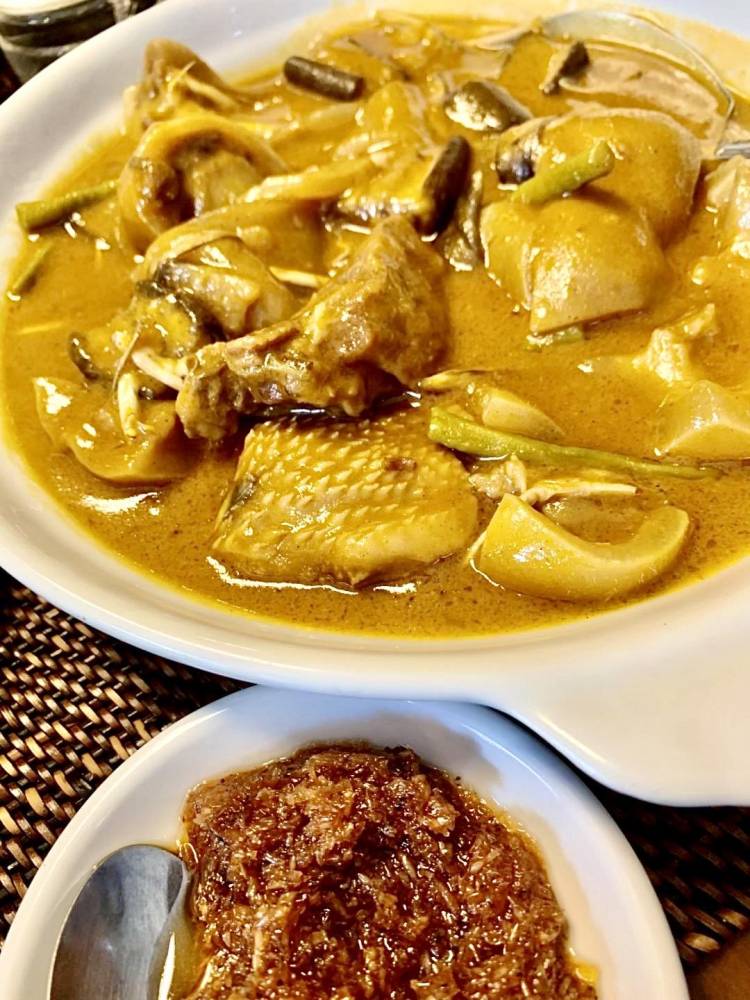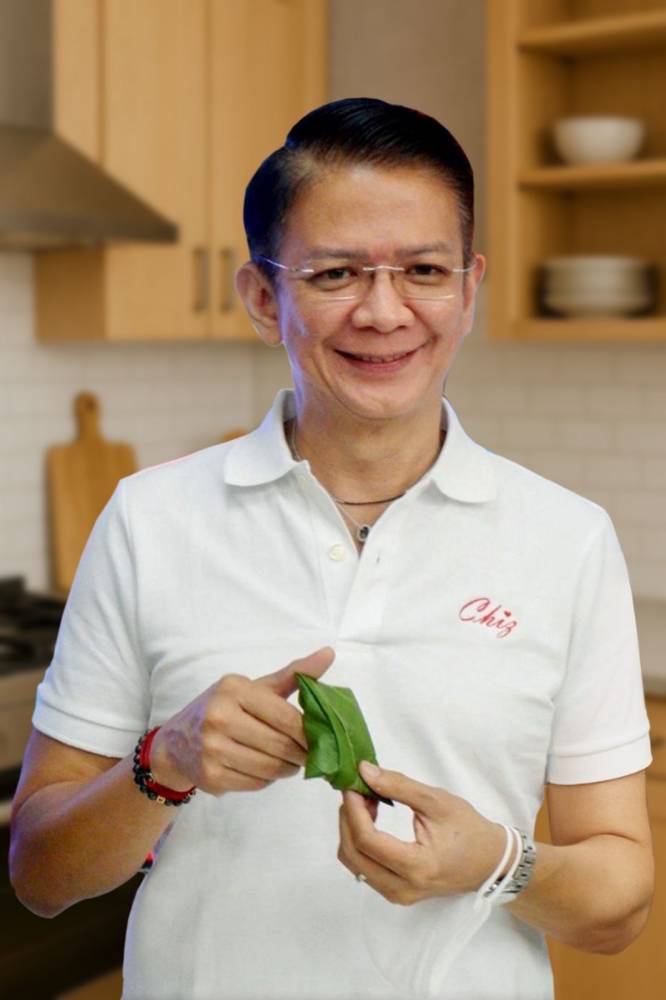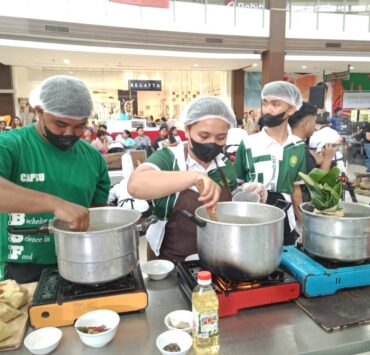The cooking senate president

I caught up with a dear childhood friend, Senate President Chiz Escudero. The senator spins a lot of plates, with the one labeled “cooking” spinning for quite a while now.
Chiz was around 12 when he first ventured into the kitchen. He recalled how he diligently washed, cut, and prepared the ingredients needed by his mom. With fondness, he reminisced how he sometimes took charge of cooking the eggs, bacon, daing, tuyo, or hotdog for breakfast.
It was his mother’s food that sparked his interest in cooking. Nanay Evie, a University of the Philippines (UP) Home Economics graduate, made family get-togethers much-anticipated affairs. Knowing that she will cook her specialties—bulalo, lengua, prawns thermidor, or sinigang—was reason enough to beckon all her children to the table.
Chiz enjoys a wide range of cuisines and tastes. There is no masking his Bicolano heritage as he prefers his food to be generally spicy.

Comfort food
I recall the first cooking lesson he had in my kitchen, many moons ago, when he requested that I teach him how to cook his favorites. At the time, he wanted to perfect his comfort food. We made crispy tadyang, adobo flakes that he wanted prepared with chilies, and a delectable tinola with an ultra-flavorful brownish broth laced with chilies that we christened “Escudero style.” We later advanced to paella and cochinillo. To date, Chiz has perfected his paella, of course, done his way.
Chiz further honed his skills at First Gourmet Academy with Chef Matts Loo.
Chiz is now more than equipped to cook up a feast. He loves to prepare kare-kare, paella Valenciana, beef caldereta, adobo, tinola, sinigang, tinutungan na manok (a Bicol dish), Iberian chicken, and fried rice made with leftovers. He even bakes now. His malunggay pan de sal is quite famous.
Chiz, on occasion, cooks for his wife, Heart Evangelista, and vice versa. “Yes, I cook for her, and she cooks her pasta dishes for me,” he said.
“She loves my beef caldereta and how I do her steak, while my fave would be her truffle pasta.”
Being married to a family of famed restaurateurs further contributed to the evolution of Escudero’s style of cooking.
Chiz takes great pride in his beef caldereta, a secret recipe of his father-in-law, Daddy Rey Ongpauco, that was improved on by his sister-in-law Camille. The recipe has been passed on to Chiz, that he claims he made even better by adding siling labuyo.
When I asked what made it special, he replied with a grin, “Secret nga!”

‘Kare-kare’ from scratch
He also expounded on how he prepares kare-kare. He adapted the recipe from Epong, a friend from Sorsogon. To make it flavorful, Chiz uses whole peanuts and sticky rice. Both are tossed in a pan separately, without oil, until brown. After toasting, the peanuts are skinned and sent to the market along with the toasted rice for grinding.
The perfect ratio would be ¼ kilogram (kg) of peanuts for every 2 to 3 kg of meat, and ¼ kg of sticky rice for every 5 kg of meat. He prefers using oxtail, tripe, and beef cheeks.
When we were done chitchatting, I asked if there was anything else he wanted to impart. “I usually add a pinch of sugar to correct too much saltiness or bitterness. Sweetness sometimes has the same effect in life too … you should try it.”
Add to that, “Cooking, unlike life, is predictable and (often) easily correctable.”

‘Tinutungan na Manok’
Chiz shares his favorite tinutungan na manok recipe from Saling Hainto and her family.
- 1 kg native chicken
- 1 pc medium green papaya, sliced
- 1 pc coconut, big, grated
- 1 pc ginger, cut into strips
- 1 lemongrass stalk (use only the bottom third of the stalk)
- 1 tsp ground black pepper
- 1 tsp salt (adjust to taste)
- 2-3 green chili (long)
- 1 Tbsp garlic
- 2 pcs onion
Light four pieces of charcoal.
Transfer grated coconut to a stainless bowl.
Put charcoal in a stainless bowl and toss the grated coconut around to toast.
Once the grated coconut has been toasted, remove the charcoal.
After toasting the coconut, add a cup of warm water and squeeze. Let’s call this the first extraction. Set aside.
Then, to the toasted coconut that has been squeezed, add another cup of warm water for the second extraction. Keep the two extractions separate.
Sauté garlic, onions, pepper, ginger, and lemongrass.
Add chicken pieces.
Cook chicken in aromatics for a few minutes.
Add the second extraction of coconut milk, salt, and green papaya.
Cook until the chicken is soft. You may add hot water if needed.
Add the first extraction of coconut milk and season to taste.
Add green chilies and cook until a little oil is extracted from the sauce.
Follow @iamreggieaspiras on Instagram and Facebook; visit reggieaspiras.com





















